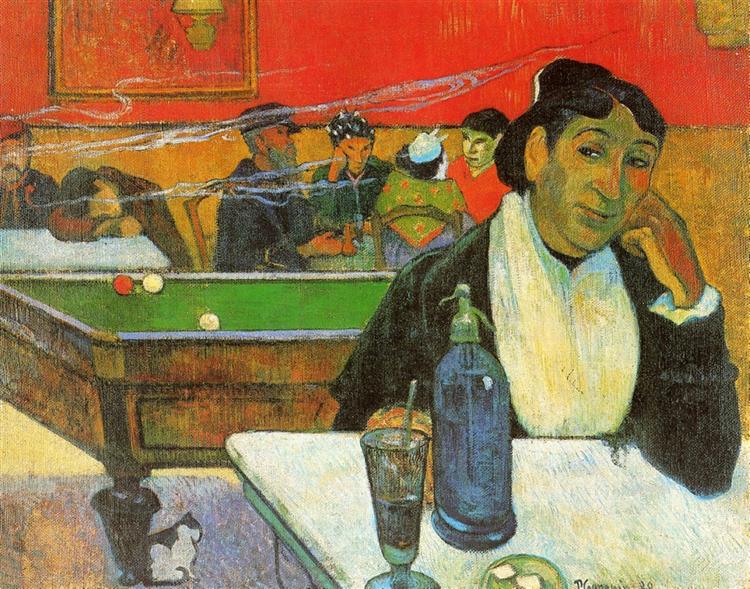Description
The painting "Night coffee in Arles" by Vincent Van Gogh, created in 1888, stands out as one of the most emblematic works of postimpressionism and reveals the emotional complexity that characterizes the production of the artist. This painting Not only does it capture the essence of a social space in the Arles of the late nineteenth century, but it is also a testimony of the intense search for Van Gogh to capture its sensitivity towards color and light, as well as its disturbing perception of the environment.
The composition is dominated by a bold use of color and a design that suggests an atmosphere of isolation and restlessness. The coffee, where the scene takes place, is represented with a vibrant palette of yellow, green and red, which seem almost vibrate on the canvas. The lighting of the room focuses on the luminous lamp on the table, which throws a warm glow that contrasts with the darkest and cold tones of the walls, thus accentuating the sensation of claustrophobia and exteriority. The whole space is designed to look at the dark coffee background, where a female figure, Madame Ginaux, is a central presence. His face, illuminated by the light that springs from the lamp, is found in an expression of contemplation, adding a layer of introspection to paint.
The choice of colors in this work is essential to understand the message that Van Gogh tries to transmit. Through its chromatic range, it manages to communicate the emotional tension experienced by the characters, as well as the coffee environment. The warm tones, such as the yellow of the soil and the walls, generate an almost oppressive contrast with the green and blue, which evoke a feeling of sadness. This juxtaposition not only provides the basis for a deeper exploration of color, but also establishes a visual dialogue that surrounds the viewer in the space experience, causing a reflection about loneliness and melancholy.
Coffee in Arles has a much deeper symbolic load within Van Gogh's life. This place, which was a central part of his life during his stay in southern France, becomes a microcosm of his internal struggles and his search for human connection. The characters, although scarce in number, are representative of the search for the company and the shelter they found in these spaces at a time when industrialization and alienation began to mark social life.
The work is within the evolution of Van Gogh's style, who, in this period, was at the cusp of his experimentation with color and visual psychology. The influence of impressionism postulates is evident, while its approach to color is close to a visceral expressiveness that characterizes it. Contemporary works of artists such as Paul Gauguin and Henri Toulouse-Lautrec also share interest in representing nightlife and social interactions, each with their own interpretation of color and the figure.
The "Night Coffee in Arles" is not only a portrait of a specific moment in time, but a set of emotions encapsulated in pigment and shape. It invites us to reflect on the complexity of human relations, the sense of belonging and the impact of the environment on the psyche of the individual. Ultimately, the work stands as a powerful reminder of Van Gogh's struggle, not only as an artist, but as a human being in his search to understand his place in the world. His ability to combine atmosphere, color and emotion in a single and dynamic image ensures that it remains a subject of study and fascination for critics and art lovers equally.
KUADROS ©, a famous paint on your wall.
Hand-made oil painting reproductions, with the quality of professional artists and the distinctive seal of KUADROS ©.
Reproduction service paintings With a guarantee of satisfaction. If you are not completely satisfied with the replica of your painting, we refund your money 100%.

